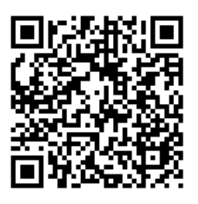Surging gold ETFs fuel Q1 demand
The World Gold Council’s Q1 2025 Gold Demand Trends report reveals total quarterly gold demand (including OTC1) was 1,206t, a 1% increase year-on-year, in a record high price environment, in which gold surpassed US$3,000/oz.
The gold ETF revival fuelled a more-than doubling of total investment demand to 552t, a 170% year-on-year increase and the highest since Q1 2022. ETF inflows accelerated around the world, totalling 226t in the first quarter as price momentum and tariff policy uncertainty drove investors to gold as a safe haven.
Total bar and coin demand increased 3% y/y, remaining elevated at 325t during Q1, spurred by a surge of retail investment in China, which posted its’ second-highest quarter on record. Eastern investors drove much of the global demand for bar and coin, offsetting Western weakness as appetite in the US dropped 22% year-on-year, alongside a modest 12t recovery in Europe, but from a very low base in the same quarter last year.
Central Banks are now entering their 16th consecutive year of net-buying, adding 244t to global reserves in Q1 amidst ongoing global uncertainty. While this level of demand was 21% lower year-on-year, it remains robust and in line with the quarterly average for the last three years of sustained, strong buying.
Unsurprisingly, jewellery demand was negatively impacted as gold hit 20 all-time price highs in Q1. Volumes reached their lowest point since demand was stifled by the COVID pandemic in 2020. However, the jewellery market remained relatively resilient, especially in value terms, given extreme price pressures. The first quarter saw a 9% year-on-year increase in consumer spending to US$35bn with every market except China seeing an increase in the value of gold jewellery demand.
Total gold supply was relatively flat year-on-year, at 1,206t in the first quarter as record Q1 mine production was offset by slightly lower recycling. Technology demand was also stable at 80t, compared to Q1 2024.
Louise Street, Senior Markets Analyst at the World Gold Council, commented:
“It’s been a bumpy start to the year for global markets as trade turmoil, unpredictable US policy announcements, sustained geopolitical tensions and a return of recessionary fears have created a highly uncertain environment for investors. In this context, investment demand for gold has paved the way for the highest level of first quarter demand since 2016.
“Over the past 10 months investors have returned to gold ETFs, ramping up their allocations since Q3 last year, and already in April, Asian inflows have stormed past their Q1 total. However, there is still room for growth, with global gold ETF holdings sitting 10% below their 2020 high.
“Looking ahead, the broader economic landscape remains difficult to predict, and that uncertainty could provide upside potential for gold. As turbulent times persist, safe haven demand for gold from institutions, individuals and the official sector could climb higher in the months to come.”
The Gold Demand Trends Q1 2025 report, which includes comprehensive data provided by Metals Focus, can be viewed here.
ENDS
For further information please contact:
Stephanie Cadman, World Gold Council, T: +44 20 7826 4740
E: [email protected]
Lizzie Murray, Vested T: +44 7914 698 310
E: [email protected]
World Gold Council
We are a membership organisation that champions the role gold plays as a strategic asset, shaping the future of a responsible and accessible gold supply chain. Our team of experts builds understanding of the use case and possibilities of gold through trusted research, analysis, commentary, and insights. We drive industry progress, shaping policy and setting the standards for a perpetual and sustainable gold market.
You can follow the World Gold Council on X (Twitter) at @goldcouncil and LinkedIn.
Footnotes
1Total gold demand refers to the total of jewellery fabrication, technology fabrication, investment, net purchases by central banks, and over-the-counter (OTC) transactions (also referred to as ‘off exchange’ trading) that take place directly between two parties, unlike exchange trading which is conducted via an exchange.
